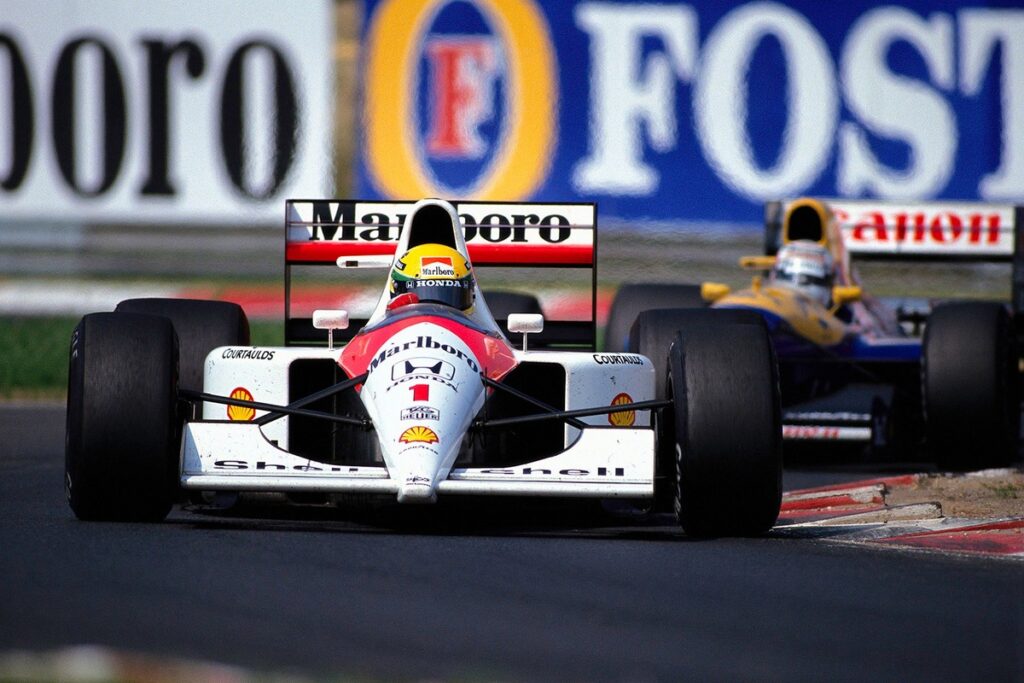1979 – Alan Jones’ late-season surge
Race 9: 13th, 25-point deficit
Race 12: 3rd, 10-point deficit
Final standings: 3rd, 11-point deficit
Alan Jones, Williams FW07 Ford
Photo by: Motorsport Images
The 1979 season, in which ground effect became widespread following Lotus’ success the previous year, was dominated by Ferrari – but Williams’ Alan Jones still became a dark horse for the title, despite scoring just four points in the first half of the season.
Frank Williams and Patrick Head’s new Williams Grand Prix Engineering venture, which debuted in F1 in 1977 with a customer March car, competed in the next season with its own challenger, the FW06. Results were mixed; Jones was a podium contender on several occasions but clinched just one at Watkins Glen, as reliability issues tended to get the better of him.
Williams started the 1979 campaign with its year-old FW06 and Jones scored points just once in four races, taking third place in Long Beach behind the Ferraris of Gilles Villeneuve and Jody Scheckter.
Williams then launched its FW07, which was inspired by the 1978 title-winning Lotus 79. Its potential was soon obvious, as Jones retired from the lead in Zolder for what was just the car’s second race, then retired with bent steering after thumping a barrier in Monaco, where he was running third.
Jones took his first career pole position at Silverstone, with a comfortable 0.6s gap to Renault’s Jean-Pierre Jabouille, and led the first half of the race until a water pump problem caused his retirement. With Jabouille also ruled out of contention by engine issues, Williams team-mate Clay Regazzoni inherited the victory.
As a consequence, with six races to go, Jones was just 13th in the standings on seven points. Scheckter led with 32 points, followed by Villeneuve (26) and Ligier’s Jacques Laffite (24). In other words, the Australian was all but ruled out of the title race.
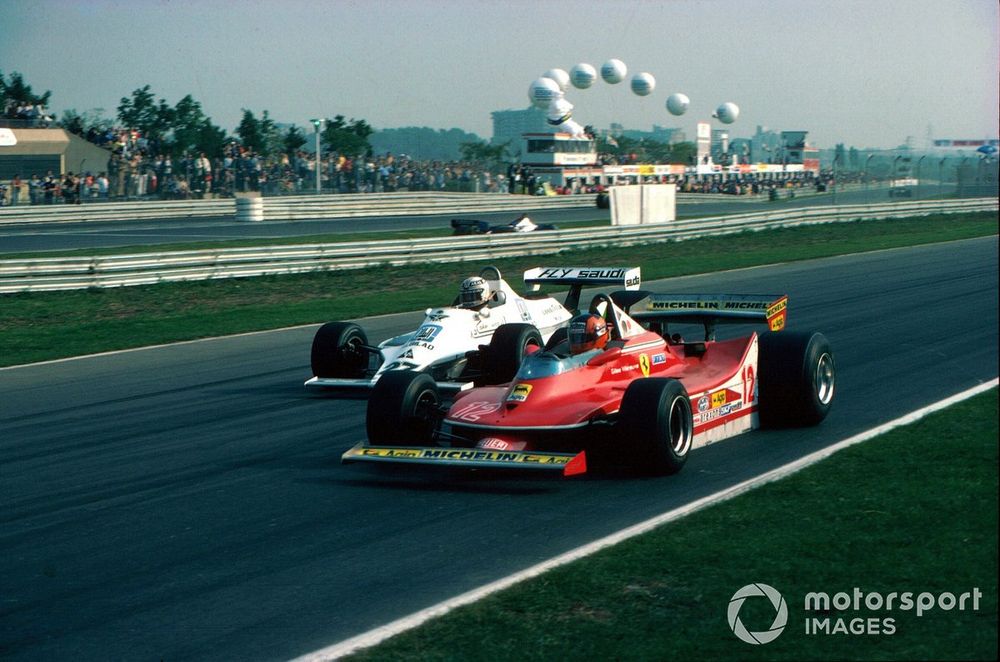
Alan Jones, WIlliams Ford FW07 passes the Ferrari 312T4 of Gilles Villeneuve
Photo by: David Phipps
Or was he? Jones took three consecutive wins on merit at Hockenheim, Spielberg and Zandvoort, where he outduelled Villeneuve. Over the month of July, the Williams driver vaulted himself to third in the championship, with just a 10-point deficit to Scheckter. He caught up 15 points in three races, at a time when a victory was worth nine, and there were three more rounds to go.
In Monza however, Jones was swallowed up by the field at the start and finished ninth while Scheckter won. Due to the rule according to which only each competitor’s four best results counted for each half of the season, his deficit grew to ‘only’ 17 points. But the rule also meant any further podium finish by Jones was going to lose him the three points scored in France, so he was ruled out of title contention.
He still snatched the victory away from Villeneuve with an audacious move down the inside of the hairpin, at a Circuit de l’Ile Notre-Dame, which would soon bear his opponent’s name…
1991 – Mansell gives Senna a hard time
Race 5: 7th, 33-point deficit
Race 9: 2nd, 8-point deficit
Final standings: 2nd, 24-point deficit
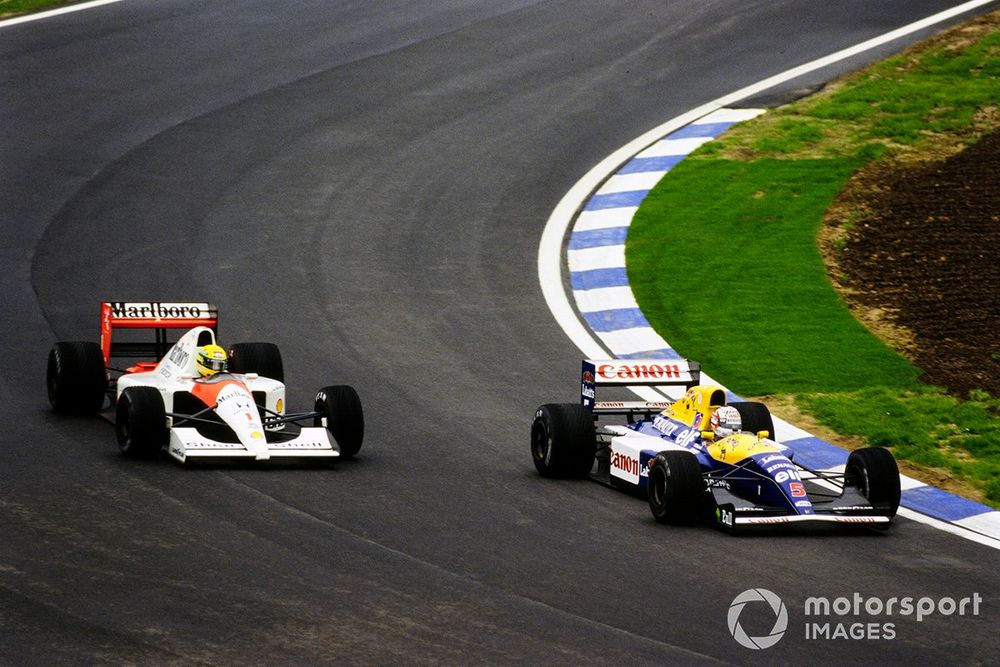
Nigel Mansell, Williams FW14 Renault, Ayrton Senna, McLaren MP4-6 Honda
Photo by: Motorsport Images
After a titanic title battle between McLaren’s Ayrton Senna and Ferrari’s Alain Prost in 1990, which ended in an infamously controversial crash at Suzuka, the Brazilian’s 1991 campaign got off to a flying start.
Senna won the first four races of the year from pole position, leading 282 out of 291 racing laps in Phoenix, Sao Paulo, Imola and Monaco.
Having moved back to Williams from Ferrari after calling off his F1 retirement, Mansell retired from third and second due to gearbox issues in the United States and Brazil respectively; in the San Marino race, further gearbox trouble caused a fourth-to-10th drop at the start, before he was rear-ended by Martin Brundle at the end of the lap.
“Have you ever had neutral after first gear on a start like that before?” Mansell asked Williams engineers on the pitwall. “I’m ******* pissed off, I really am. I drive slow, I get it together. It’s a ******* nightmare, and then someone stuffs me up in the back for me to retire.”
Mansell was more successful in Monaco, where he took the runner-up spot behind Senna, then led the Canadian Grand Prix from the start until the last lap, when his car got stuck into neutral as he was waving to the crowd.
The Williams driver scored one point in that race while Senna retired, but he was now down in seventh in the standings with seven points to his name, while the Brazilian already had 40.
The Adrian Newey-designed FW14’s potential was, however, clear to see. Williams achieved a 1-2 in the next race in Mexico, with Senna joining race winner Riccardo Patrese and Mansell on the podium.
The Briton then outduelled former Ferrari team-mate Prost for victory on the latter’s Magny-Cours home turf, before taking a comprehensive and popular win in front of his Silverstone home crowd, as Senna ran out of fuel on the last lap – with Mansell driving his rival, sat on his Williams, back to the pits.
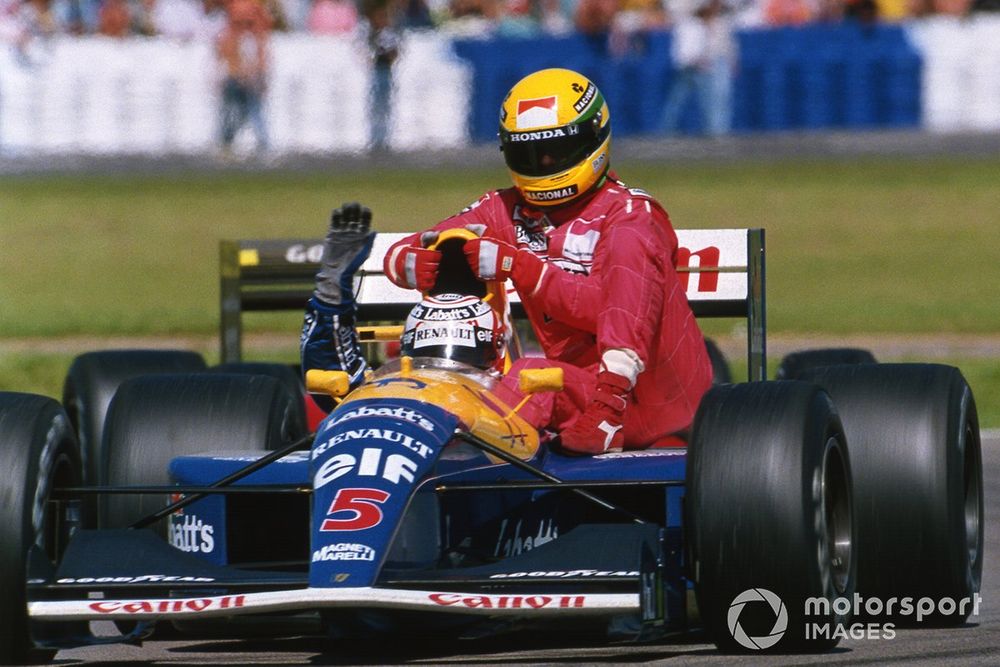
Ayrton Senna, McLaren receives a lift back to the pits from Nigel Mansell, Williams FW14 Renault
Photo by: Motorsport Images
Another 1-2 followed at Hockenheim; that time, Mansell led Patrese, so he left Germany with 43 points to Senna’s 51 – and a real shot at the title.
But the McLaren driver took the upper hand back in Hungary, withstanding pressure from the Williams cars throughout the race after setting pole by 1.232s. He then inherited the victory at Spa-Francorchamps after successive leaders Mansell and Jean Alesi’s cars broke down.
Mansell was now 22 points down with five races to go; wins at Monza and Barcelona weren’t enough to mount a real challenge anymore, as he was disqualified from the Portuguese Grand Prix due to his mechanics changing a tyre outside the allowed pit area, then he shunted out of the Suzuka race.
Mansell took the runner-up spot in the championship, 24 points down on Senna, with five victories.
2000 – Hakkinen gives it all as Schumacher and Ferrari take over
Race 8: 3rd, 24-point deficit
Race 13: 1st, 6-point advantage
Final standings: 2nd, 19-point deficit
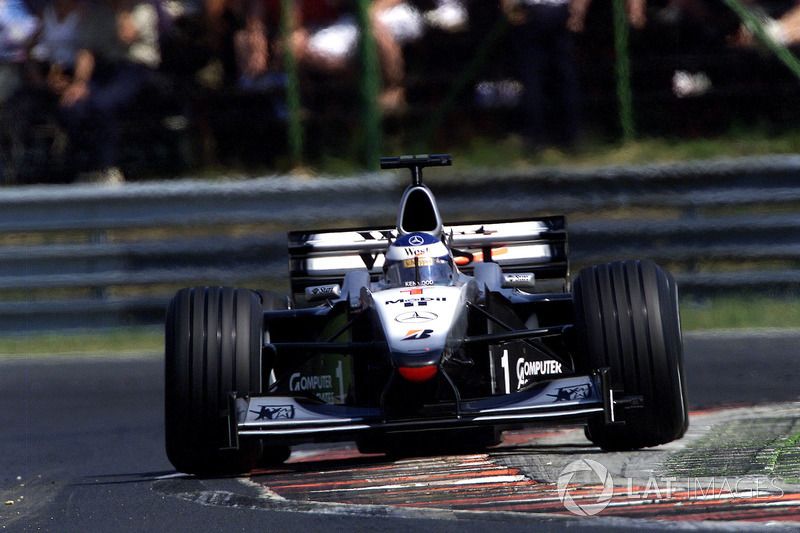
Mika Hakkinen, McLaren
Photo by: Motorsport Images
By 2000, Ferrari had been waiting for a drivers’ title for a long time. Michael Schumacher had been denied by his own unsportsmanlike driving in 1997 and a broken leg in 1999, having been beaten to the 1998 crown by Mika Hakkinen – just like interim lead Ferrari driver Eddie Irvine the following year.
The new aptly named F1-2000 challenger, designed under Ross Brawn and Rory Byrne, was a step forward compared to the competition, with Schumacher winning five of the first eight grands prix, which brought his mid-season lead to more than 20 points over McLaren’s David Coulthard and Hakkinen, as well as new Ferrari team-mate Rubens Barrichello, whose hopes to be anything more than a number-two driver were quickly dashed.
McLaren’s new MP4-15 was no bad car; Hakkinen actually set pole for the opening three rounds of the season, but mechanical issues took him out of the Melbourne and Sao Paulo races, while he and McLaren were outfoxed by Ferrari’s strategy at Imola. The Finn took his only victory in those first eight grands prix at Barcelona, where Schumacher suffered pitstop trouble.
In other words, it didn’t look like anyone was going to challenge the German for the title, but that was when he suffered three consecutive retirements. An engine failure took him out of the French Grand Prix, in which he was running second; in Austria, he was spun around by BAR’s Ricardo Zonta at Turn 1 and consequently was hit by Jordan’s Jarno Trulli; a poor start in Germany saw him collide with Benetton’s Giancarlo Fisichella.
Meanwhile, Hakkinen finished second to team-mate Coulthard in Magny-Cours, before leading the Scot to victory at A1-Ring and taking a solid runner-up spot behind maiden winner Barrichello at Hockenheim. At that stage, both McLaren drivers were two points off Schumacher in the standings, with Barrichello 10 points behind his team-mate.
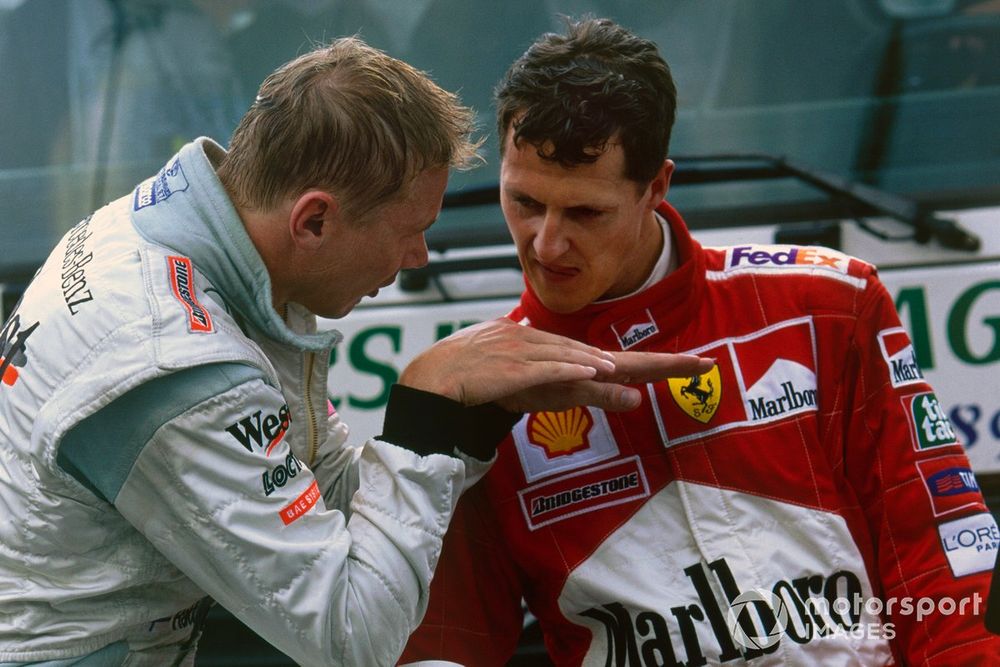
Michael Schumacher, Ferrari F1-2000, listens to Mika Hakkinen, McLaren MP4/15
Photo by: Steven Tee / Motorsport Images
Hakkinen’s strong form continued in Hungary, where he won as Schumacher only just held on to second place against Coulthard, and in Belgium, where the Finn performed his famous three-wide winning overtake on his Ferrari rival – with Zonta’s BAR in the middle.
Hakkinen now led the championship by six points, but Schumacher ruthlessly pounced by winning the last four grands prix. Hakkinen’s engine failure in Indianapolis and stop-go penalty for jumping the start at Sepang didn’t help, but even assuming those events had not happened, the McLaren racer’s final 19-point deficit shows the title probably was just out of reach.
2006 – Schumacher fails to win eighth title but goes out in style
Race 9: 2nd, 25-point deficit
Race 16: 1st, equal points
Final standings: 2nd, 13-point deficit
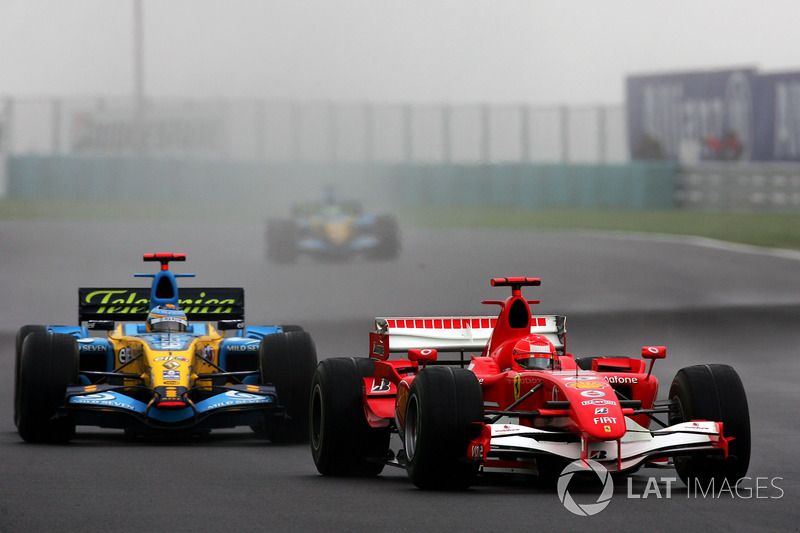
Michael Schumacher, Ferrari 248 F1 leads Fernando Alonso, Renault R26
Photo by: Sutton Images
Fernando Alonso was a paragon of consistency in his Renault years, and it showed in the 2006 season, which the reigning world champion started extremely strongly: six victories and three second-place finishes in nine grands prix.
Rival Schumacher wasn’t doing so badly himself, having won a couple of races while directly following Alonso home on four occasions, but he lost 21 points to the Spaniard when taking an engine-related grid penalty in Malaysia, crashing out from the Australian Grand Prix, and infamously parking his Ferrari in Monaco qualifying to deny his rival a shot at pole position – with stewards sending him to the back of the grid.
That’s how Schumacher found himself 25 points down halfway through the season. Yet, over the next seven races, he managed to bridge that gap entirely, thanks to victories at Indianapolis, Magny-Cours, Hockenheim, Monza and Shanghai – all five with a degree of dominance.
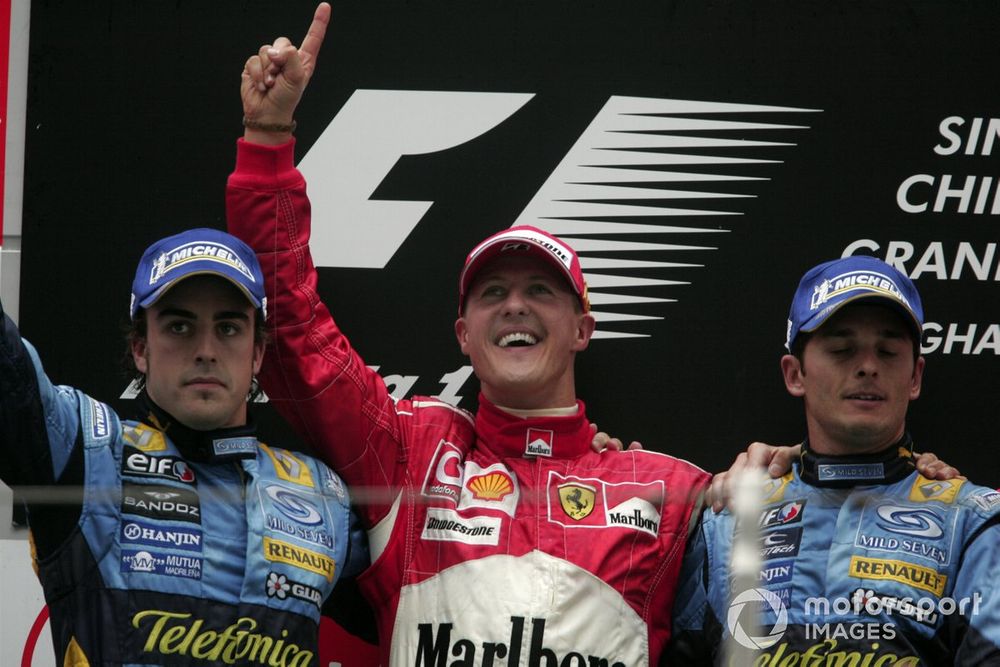
Fernando Alonso, Renault, Michael Schumacher, Ferrari and Giancarlo Fisichella, Renault
Photo by: Glenn Dunbar / Motorsport Images
Meanwhile, Renault lost some pace due to mass dampers – which the Anglo-French team mastered – being outlawed, and Alonso dropped some crucial points when a loose wheel nut caused his retirement from the lead of the Hungarian Grand Prix and his engine failed as he was running third at Monza.
Alonso and Schumacher therefore went into the penultimate round tied on points, but the Ferrari’s engine let go as the German led his rival at Suzuka. Alonso took the victory’s 10 points, and a near-decisive edge in the championship.
2012 – Vettel denies Alonso in memorable finale
Race 13: 4th, 39-point deficit
Race 17: 1st, 13-point advantage
Final standings: 1st, 3-point advantage
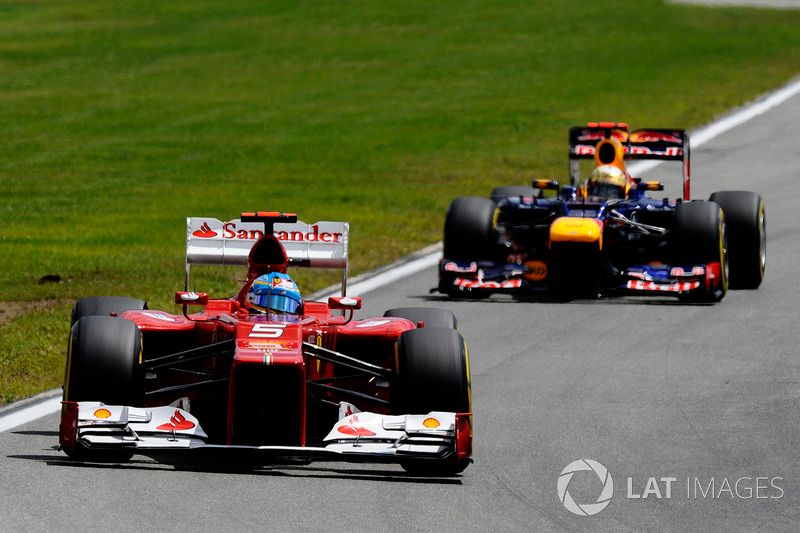
Fernando Alonso, Ferrari F2012 ahead of Sebastian Vettel, Red Bull Racing RB8
Photo by: Sutton Images
Alonso’s 2012 season can easily be considered as one of the best individual campaigns in F1 history.
In a topsy-turvy season that started with seven different winners in the first seven races, Ferrari’s F2012 was far from being the quickest car – it only got two pole positions to Red Bull’s and McLaren’s eight each. Still, Alonso gave his machinery results it didn’t seem to deserve – though one wouldn’t dare to say he ‘outperformed’ it, as a driver cannot drive a car faster than it physically is able to.
The two-time world champion’s consistency as a frontrunner, as well as three race victories at Sepang, Valencia and Hockenheim, meant that he finished the European leg of the season with a 37-point lead on McLaren’s Lewis Hamilton, with Lotus’ Kimi Raikkonen and Red Bull’s Sebastian Vettel just one and two further points in arrears respectively.
Vettel did comprehensively win the Bahrain Grand Prix, but otherwise struggled for consistency like most of his peers, also losing a potential 33 points when he retired from the lead in Valencia and from sixth place at Monza with alternator failures.
But as he often did, the German finished the season extremely strongly, taking four straight victories in Singapore, Japan, Korea and India. At Marina Bay, he did benefit from race leader Hamilton retiring due to early gearbox issues; but he led the next three races from start to finish, setting the fifth-highest number of consecutively-led kilometres (1,111) – still the highest since 1988 to this day.
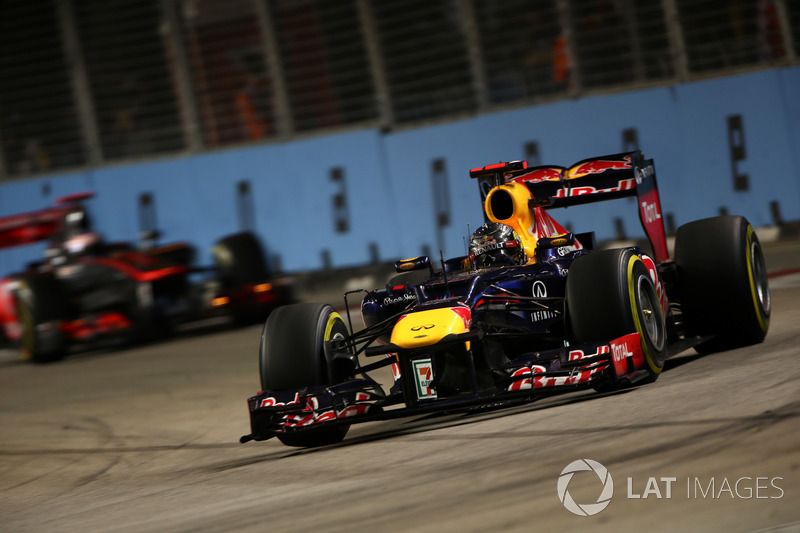
Sebastian Vettel, Red Bull Racing RB8
Photo by: Motorsport Images
Meanwhile, Alonso salvaged what he could, in a dynamic that is not too dissimilar to what we’re seeing in 2025 – with the key difference that chaser Vettel then arguably had a faster car. The Spaniard finished on the podium in three of those races, but was taken out of the Japanese GP by a first-corner touch with Raikkonen. That was a costly 25-point swing, and he found himself 13 points down on Vettel coming into the last three races of the season.
Vettel was excluded from the qualifying results in Abu Dhabi due to not having enough fuel in his car but remarkably fought to third in the race, right behind Alonso, then finished second ahead of the Iberian at Austin after narrowly losing the win to Hamilton.
Then, in a famously eventful, mixed-weather season finale at Interlagos, Vettel was involved in a first-lap collision with Bruno Senna, with his Red Bull suffering surprisingly minor damage given the violence of the impact; the German sensationally recovered to sixth position, claiming his third straight world title as a decisive race win narrowly eluded Alonso.
We want to hear from you!
Let us know what you would like to see from us in the future.
Take our survey
– The Autosport.com Team
Read the full article here

